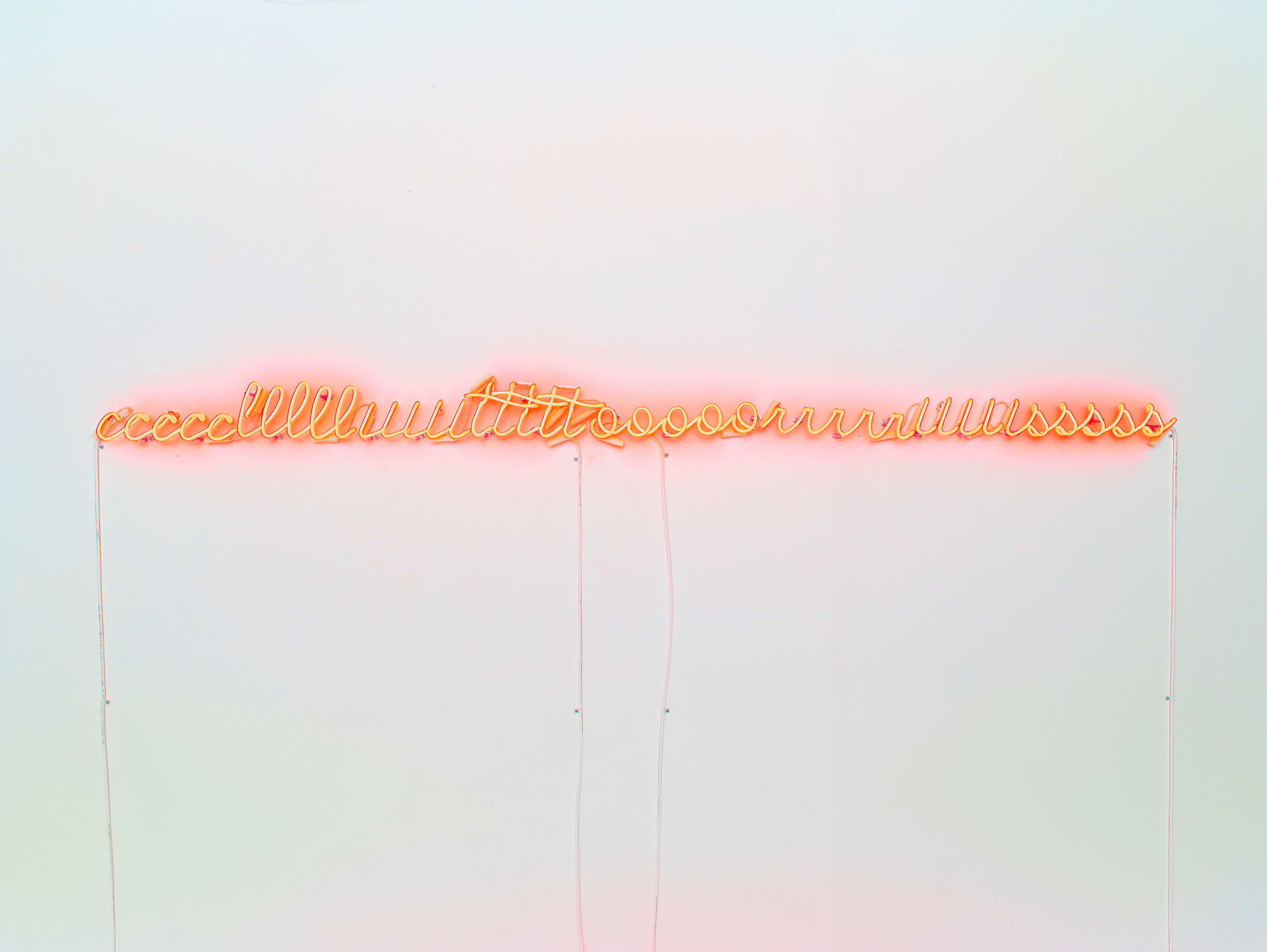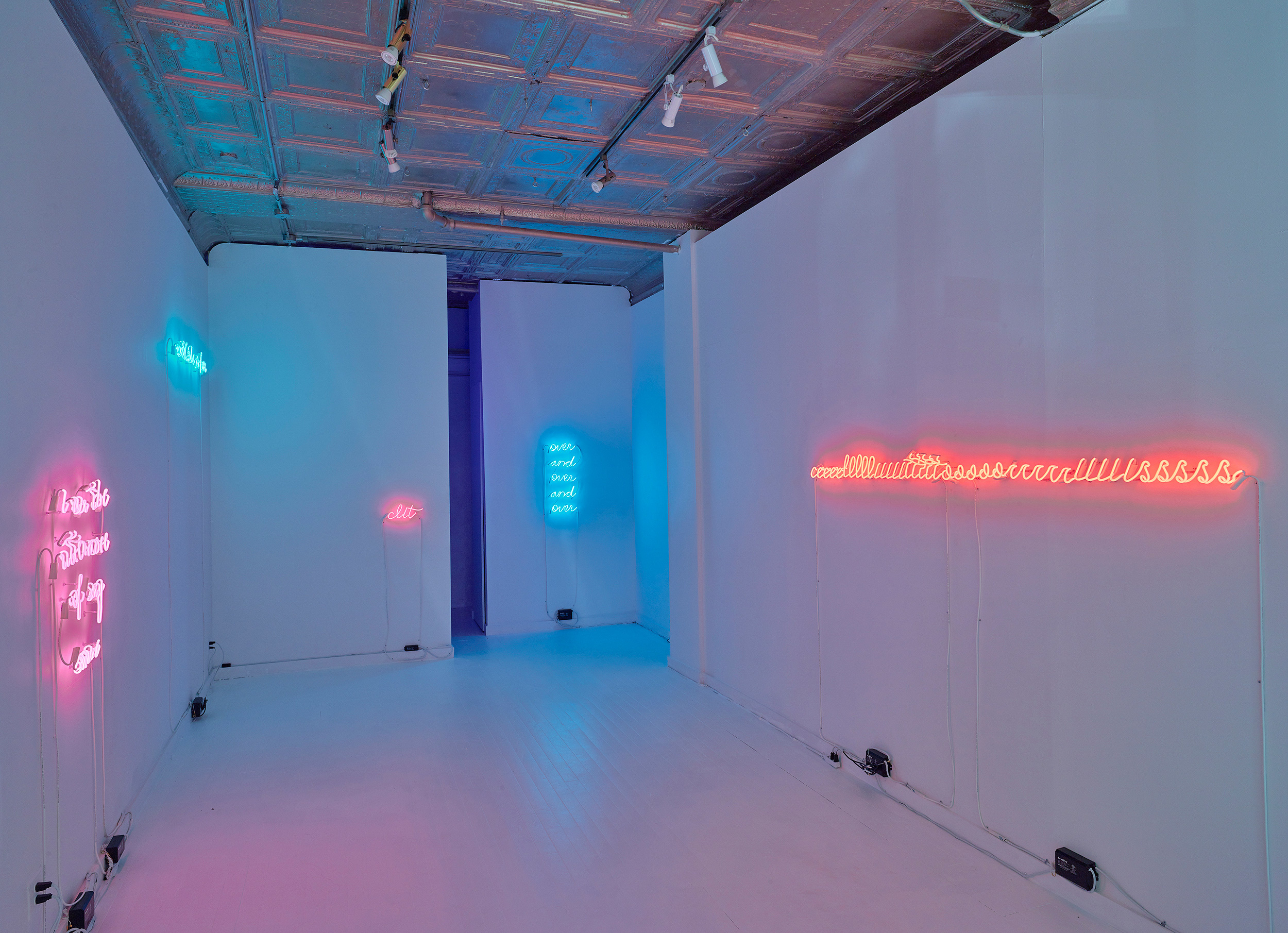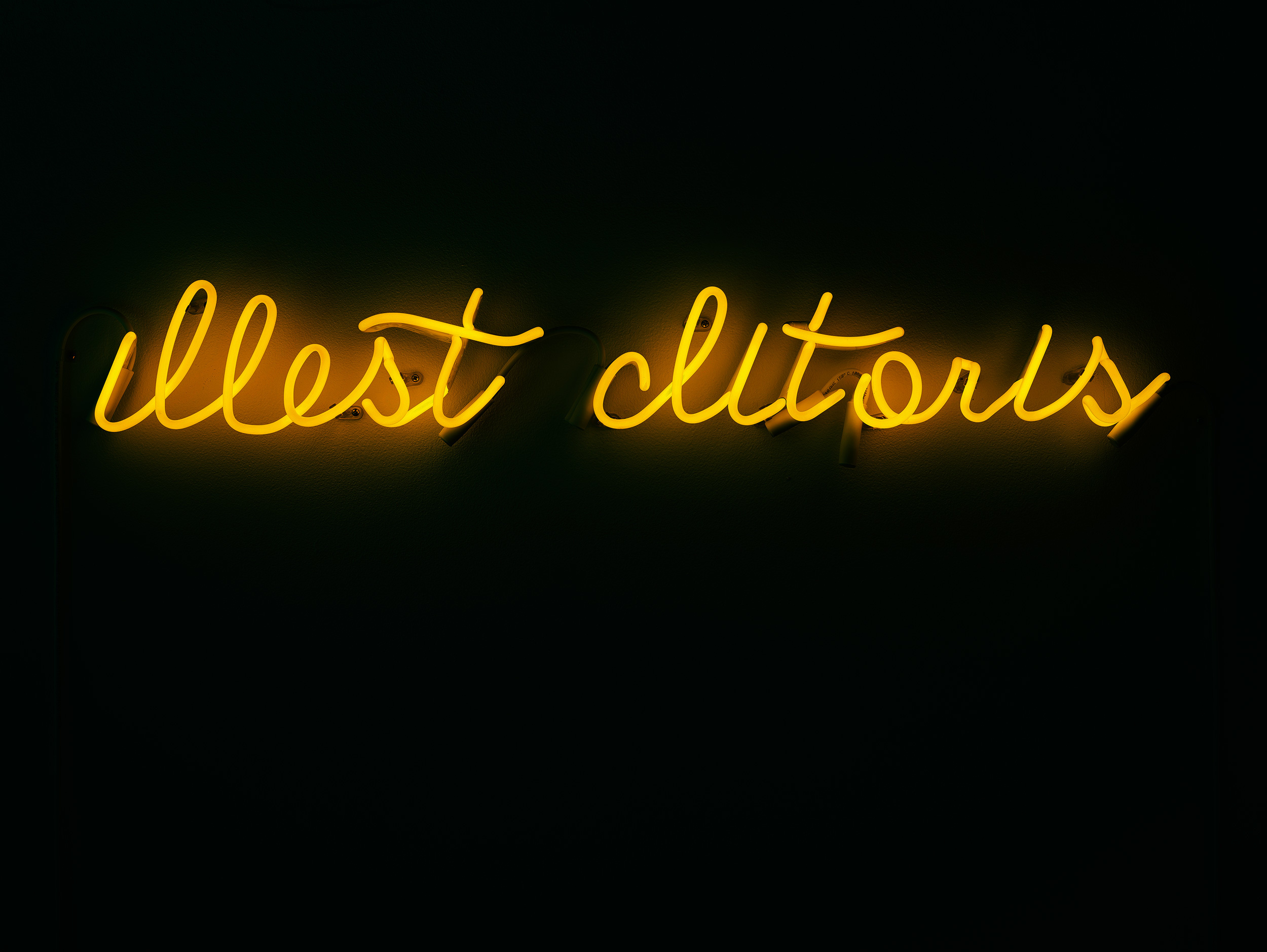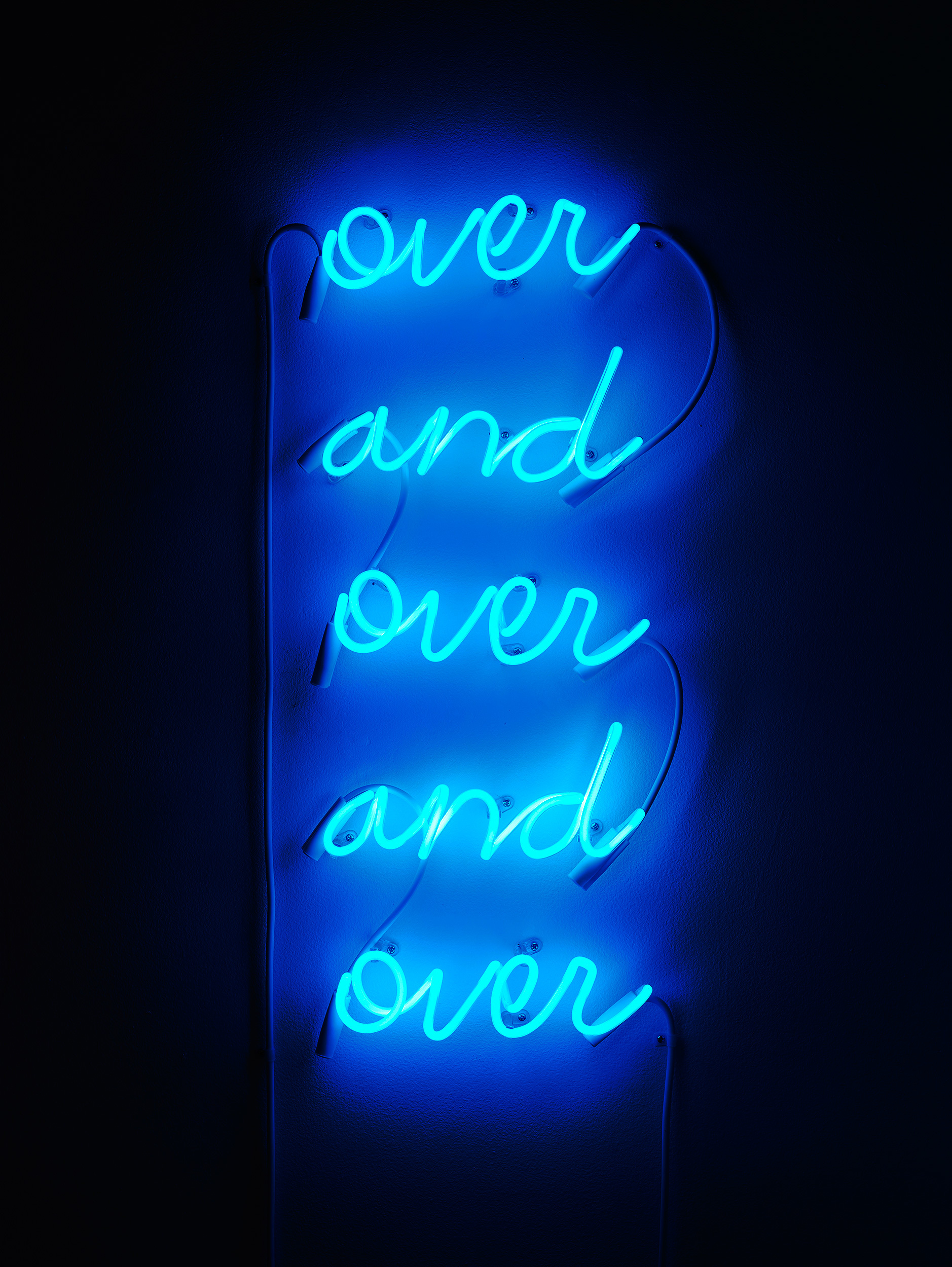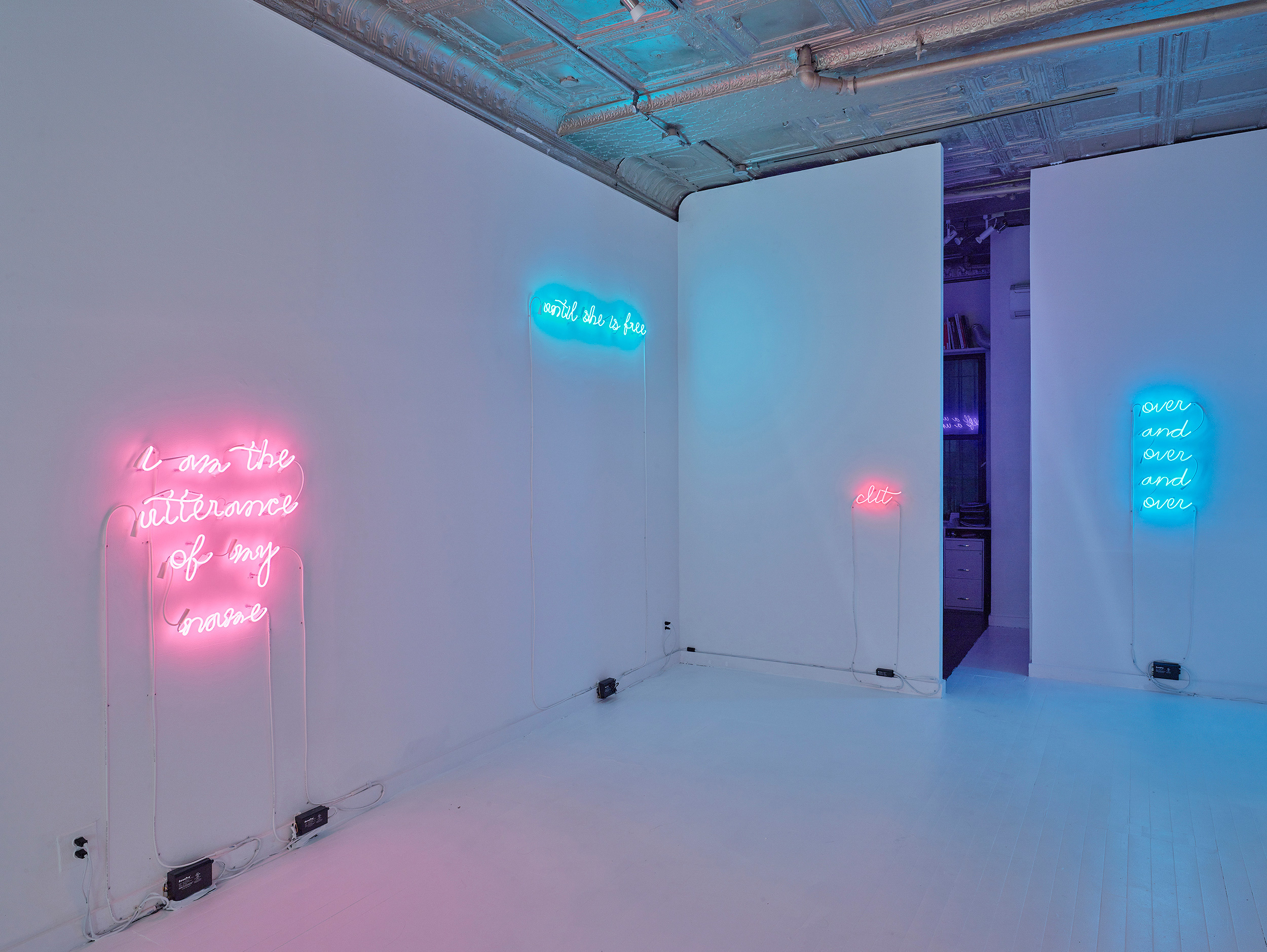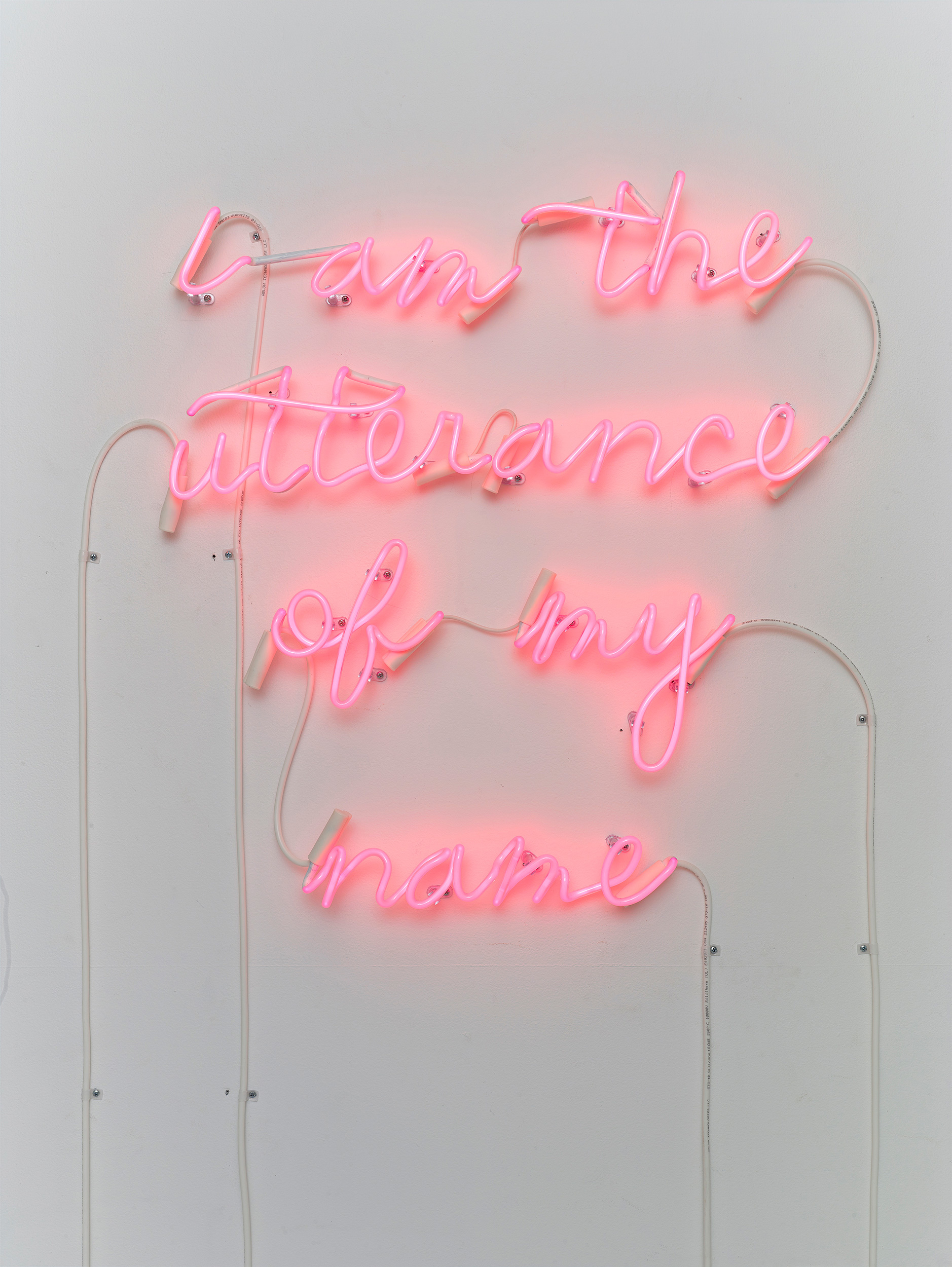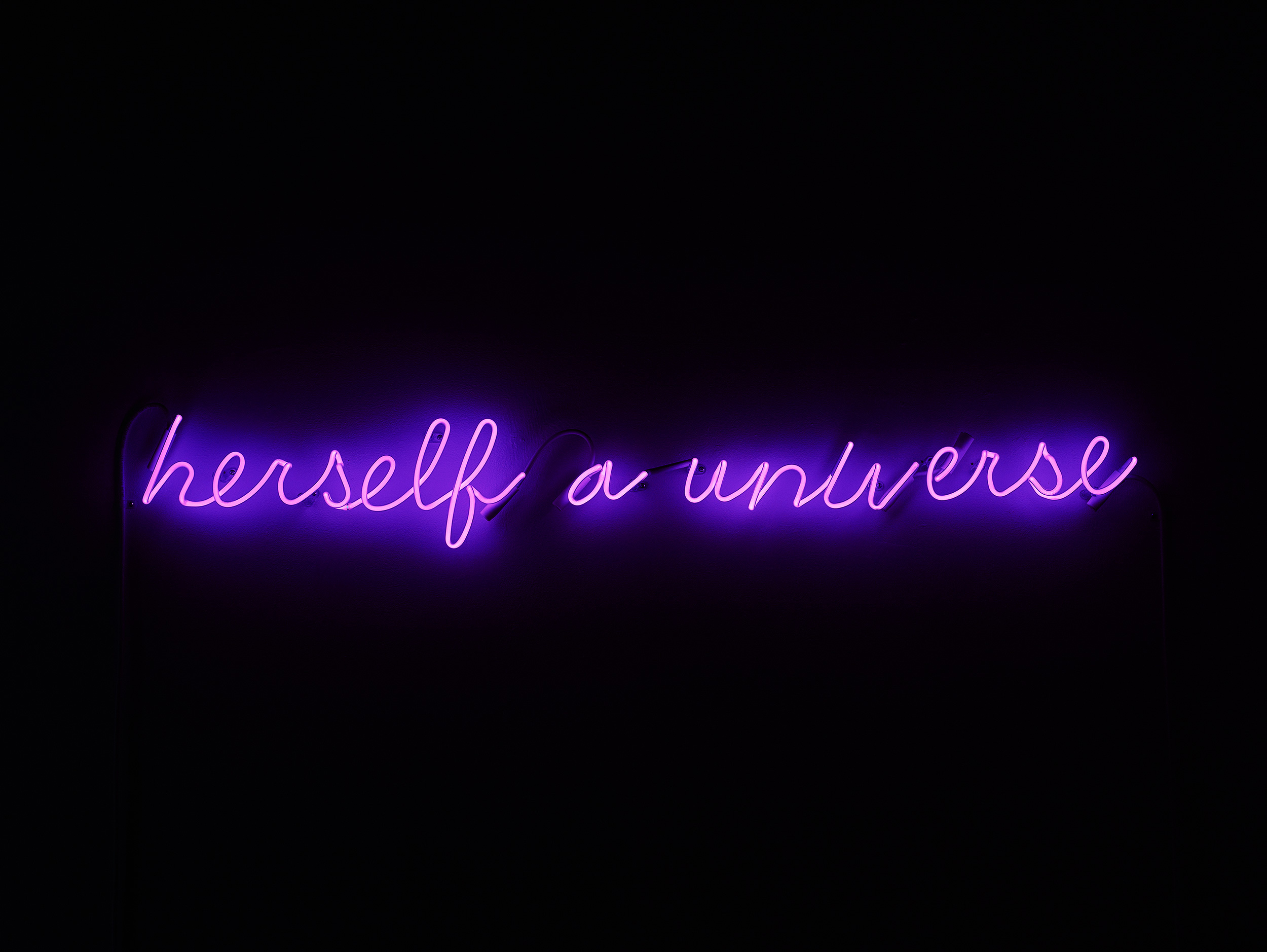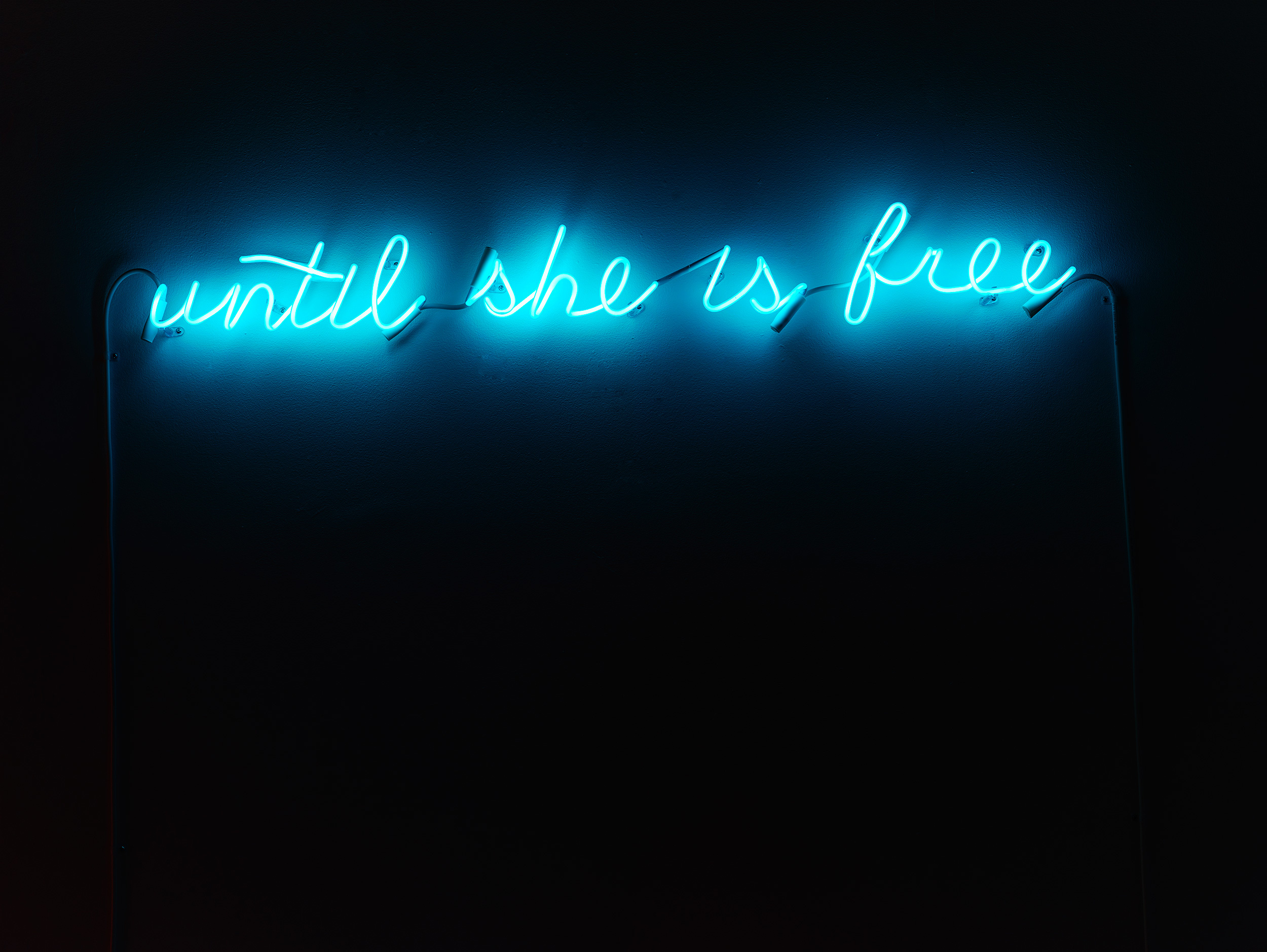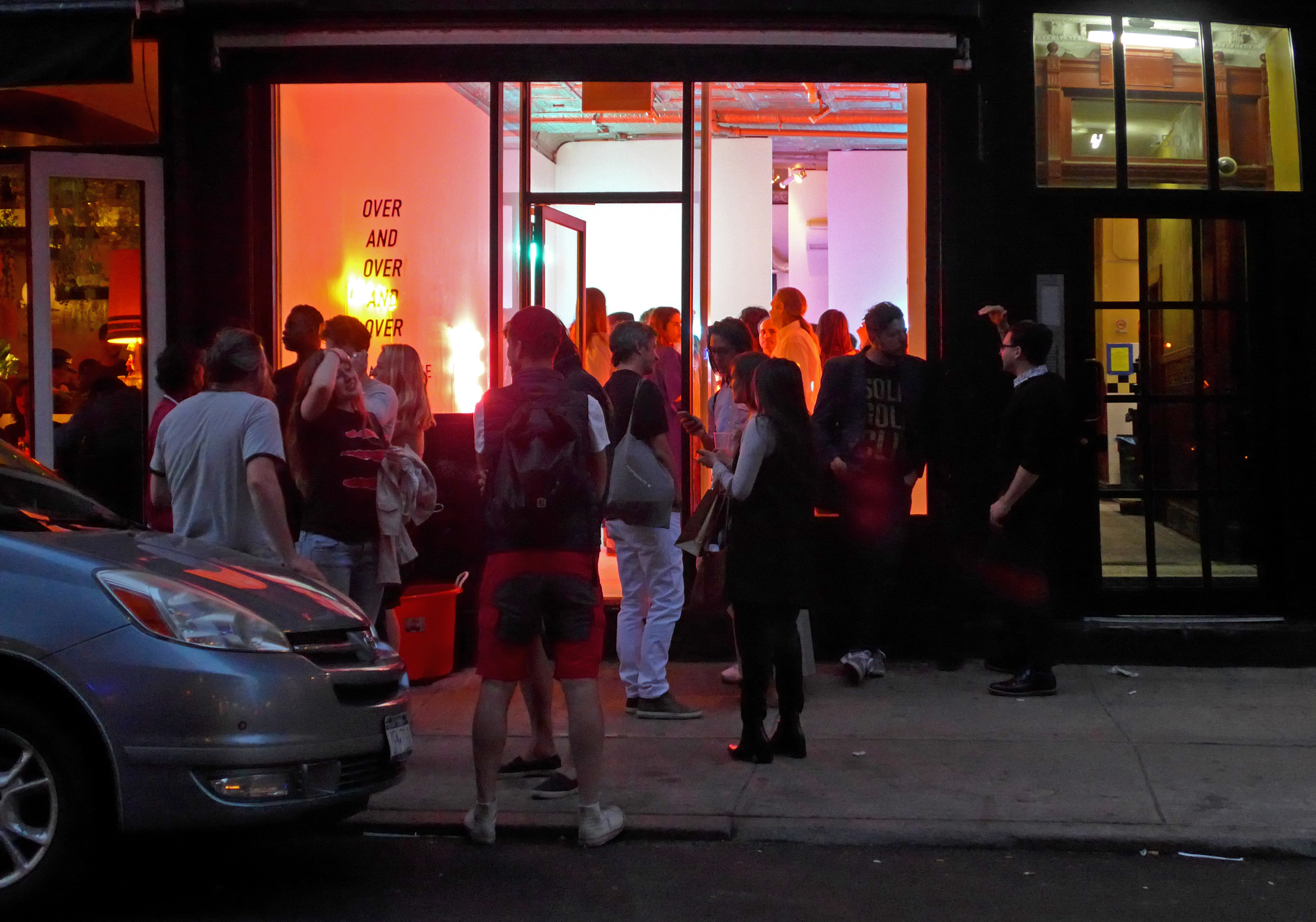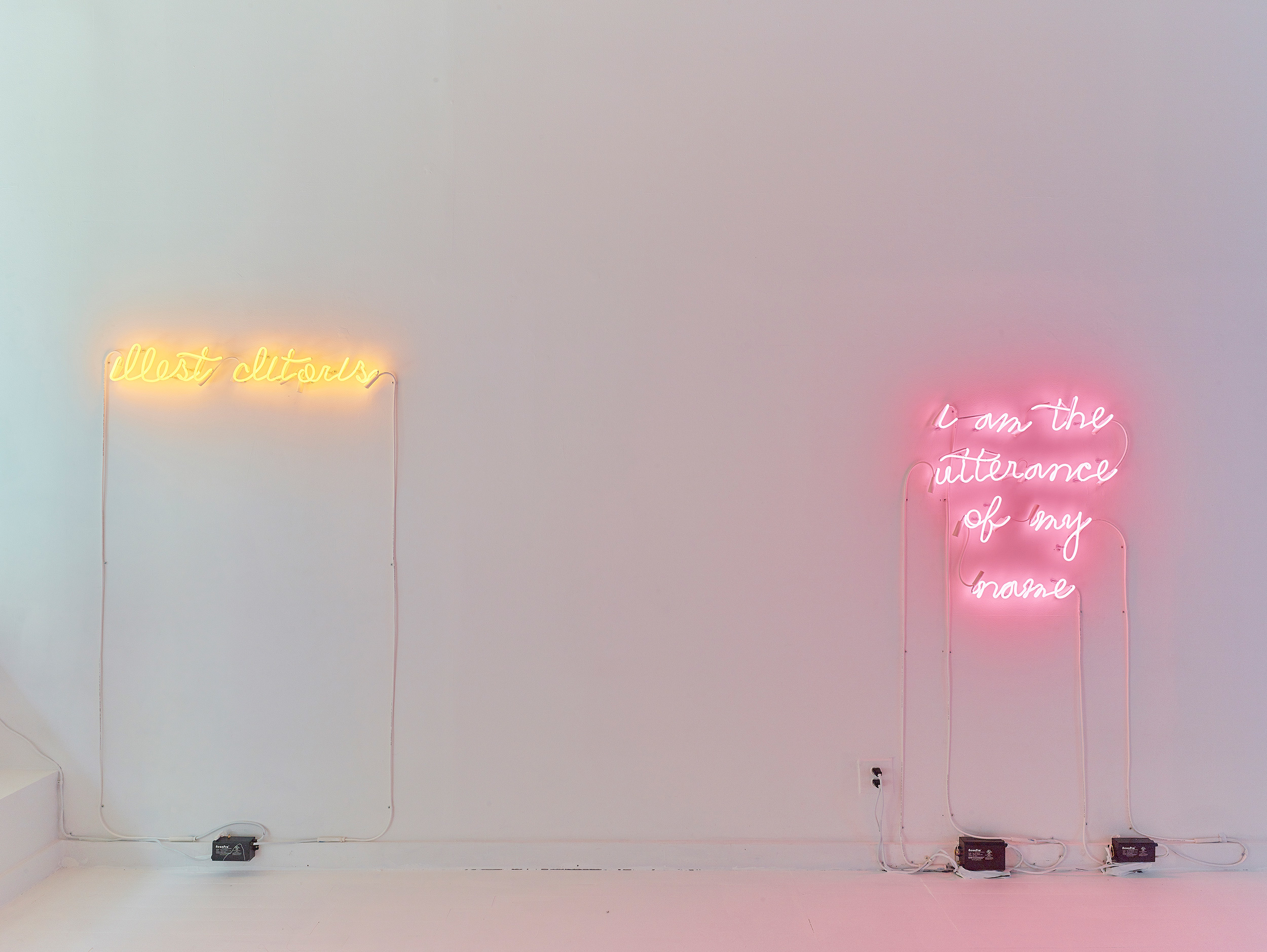“Truth told once is no match for a lie oft repeated.”
– James Rozoff
In this series of text sculptures in neon, I explored the power of the small. In bent, scripted texts, the diminished subject became the source of illumination. The title of the show addresses the gesture of repetition as a necessity for social change because until the diminished subject of the clitoris exists in representation, it must be repeated in form and speech, over and over again, until it is naturalized. The neon works are small yet powerful, illuminating themselves and the space around them. Ideas kept in the shadows of ignorance, social taboo and active censorship are made visible.
The largest work of the exhibition, My Name On the Surface of a Lost Star exists in dialogue with Bruce Nauman’s My Name as Though It Were Written on the Surface of the Moon (1968) and Glenn Ligon’s Impediment (2007).The text “cccccllllliiiiitttttooooorrrrriiiiisssss” invites sonic invocation, and illuminates denigration as Ligon does with his “sssslllluuuurrrr.” My Name contrasts itself to Nauman’s by juxtaposing the fact that it was not until 1998, 29 years after Neil Armstrong walked on the surface of the moon, that the complete anatomy of the clitoris was finally “discovered” in Western Medicine by Australian Urologist, Dr. Helen O’Connell.
I came of age in the golden era of hip-hop. “Swagga Like Us,” nods in the title to rapper M.I.A. and in the text to The Notorious B.I.G. Remixing his à propos lyric ‘Biggie {clit-y} Smalls is the Illest.” Since the beginning of Hip-Hop, MCs have brilliantly met racism and misogyny with powerful lyrics of self-recognition. This work irreverently co-opts masculine swagger to proclaim the dopeness of the clitoris.
“I Am the Utterance of My Name” is derived from an excerpt of The Thunder, Perfect Mind, an ancient Gnostic manuscript on the divine feminine dating between first century BCE to the third century CE. Discovered in Egypt in 1945, no other text in the ancient Christian canon speaks from the first person as a multi-gendered, primarily female God. The text uses constant paradox as a rhetorical device to disrupt a hostile audience who does not respect its authority. The divine voice in The Thunder presents itself as simultaneously glorious yet utterly humiliated.
“Until She Is Free” was inspired by a quote from bell hooks who said in a lecture, “all my life, I wanted to be free’. The work aestheticizes the ongoing and ancestral struggle for women’s liberation.
“Herself A Universe” posits a vision of women as vast and expansive, unknown and the unknowable.”

